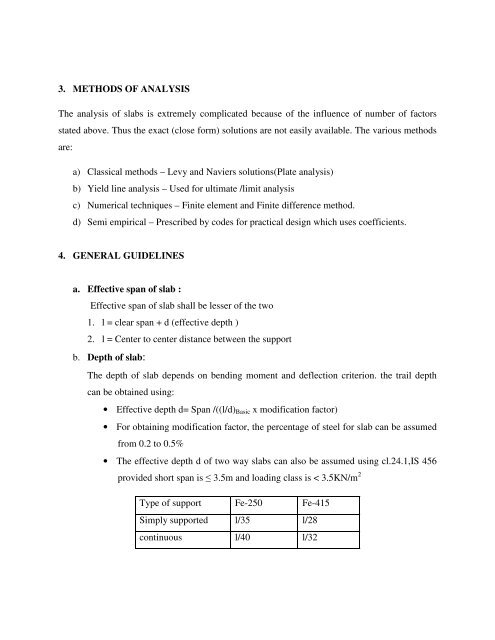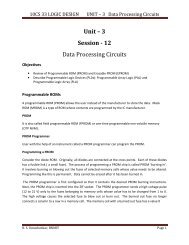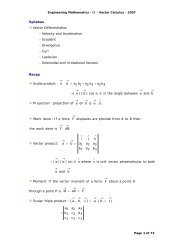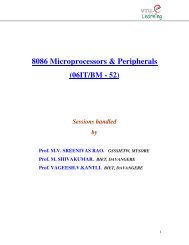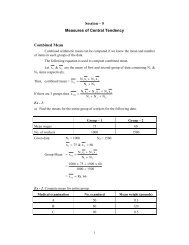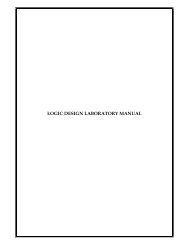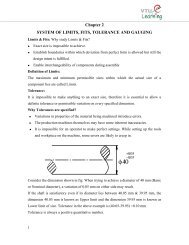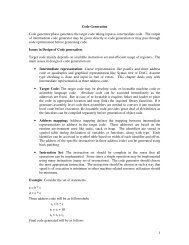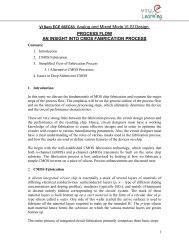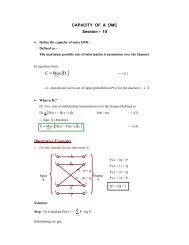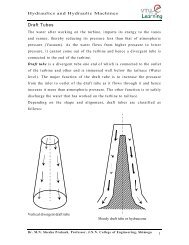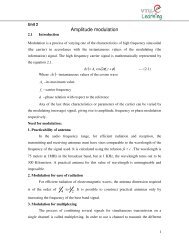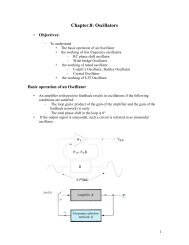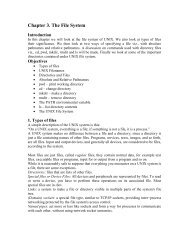DESIGN OF SLABS - VTU e-Learning
DESIGN OF SLABS - VTU e-Learning
DESIGN OF SLABS - VTU e-Learning
You also want an ePaper? Increase the reach of your titles
YUMPU automatically turns print PDFs into web optimized ePapers that Google loves.
3. METHODS <strong>OF</strong> ANALYSIS<br />
The analysis of slabs is extremely complicated because of the influence of number of factors<br />
stated above. Thus the exact (close form) solutions are not easily available. The various methods<br />
are:<br />
a) Classical methods – Levy and Naviers solutions(Plate analysis)<br />
b) Yield line analysis – Used for ultimate /limit analysis<br />
c) Numerical techniques – Finite element and Finite difference method.<br />
d) Semi empirical – Prescribed by codes for practical design which uses coefficients.<br />
4. GENERAL GUIDELINES<br />
a. Effective span of slab :<br />
Effective span of slab shall be lesser of the two<br />
1. l = clear span + d (effective depth )<br />
2. l = Center to center distance between the support<br />
b. Depth of slab:<br />
The depth of slab depends on bending moment and deflection criterion. the trail depth<br />
can be obtained using:<br />
• Effective depth d= Span /((l/d)Basic x modification factor)<br />
• For obtaining modification factor, the percentage of steel for slab can be assumed<br />
from 0.2 to 0.5%<br />
• The effective depth d of two way slabs can also be assumed using cl.24.1,IS 456<br />
provided short span is ≤ 3.5m and loading class is < 3.5KN/m 2<br />
Type of support Fe-250 Fe-415<br />
Simply supported l/35 l/28<br />
continuous l/40 l/32


